Knaresborough
OS grid reference:- NZ 170 009
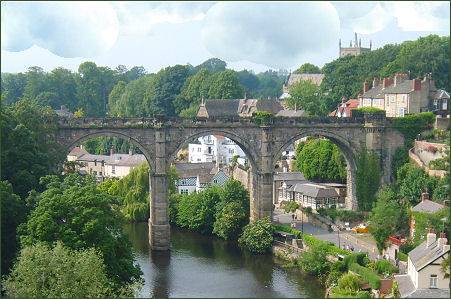 The historic market town of Knareborough lies on the River Nidd, around 4 miles to the east of Harrogate.
The historic market town of Knareborough lies on the River Nidd, around 4 miles to the east of Harrogate.
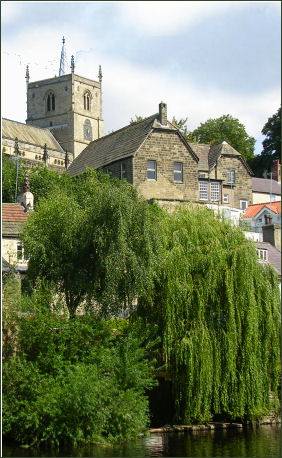 The origin of the town's name is unclear, "borough" derives from Anglo-Saxon word "burgh", meaning a fortress or fortified settlement. "Knare" may come either from the name of a chieftain, or from "knar" - a rocky outcrop, therefore meaning "the fortress on the rock".
The origin of the town's name is unclear, "borough" derives from Anglo-Saxon word "burgh", meaning a fortress or fortified settlement. "Knare" may come either from the name of a chieftain, or from "knar" - a rocky outcrop, therefore meaning "the fortress on the rock".
Knaresborough is recorded in the Domesday Book of 1086 where it is referred to as as "the Manor of Chenaresburg", the castle is not mentioned.
The earliest identified Lord of Knaresborough was one Serlo de Burgh who held Knaresborough in 1115, it later passed to Hugh de Morville in 1158.
Hugh de Morville was constable of Knaresborough and one of the four knights who, during the reign of the first Plantagenet king, Henry II, murdered Archbishop Thomas Becket at Canterbury Cathedral on 29 December 1170. Following the murder, the four knights who had assassinated fled to Knaresborough and hid at the castle. Hugh de Morville forfeited his lands in 1173.
Knaresborough was then granted to the Stuteville family, when they died out in 1205 on the death of Robert Stuteville, King John took the Honour of Knaresborough for himself and it was there that he distributed the first Maundy Money on 15 April 1210. Knaresborough Forest, which in medieval times extended far to the south of the town, is said to have been one of King John's favourite hunting grounds.
Knaresborough is a town of much character, it spills down the river bank while high above is the iconic viaduct and the ruins of historic Knaresborough Castle. Cobbled paths and stone staircases lead down to the riverside where boats are available for hire. Behind the main High Street lies a charming Market Square. A circular route around the historic town takes in quiet lanes, river side paths and ancient rights of way as it circles Knaresborough. Route literature can be found in both the Knaresborough and Harrogate Tourist Information Centres.
Sights in the town include the remains of Knaresborough Castle, Mother Shipton's Cave, nearby is a petrifying well which is the oldest charging tourist attraction in England, having been open since 1630. The cave is associated with the legendary soothsayer and prophetess Mother Shipton (circa 1488 - 1561), born Ursula Southeil, wife of Toby Shipton. According to legend she was born in the cave. Over the years, millions of people have come to see for themselves the amazing powers of the Petrifying Well. This ancient well, formerly known as the Dropping Well, is believed to be the only one of its kind in England.
Mother Shipton was born as Ursula Sontheil in 1488, during the reign of Henry VII, the first Tudor king. Little is known about her parents, but legend relates that she was born during a violent thunderstorm in a cave on the banks of the River Nidd in Knaresborough. The woman who had acted as midwife is said to have reported a great crack of thunder and a pungent smell of brimstone at the moment Ursula appeared into the world.
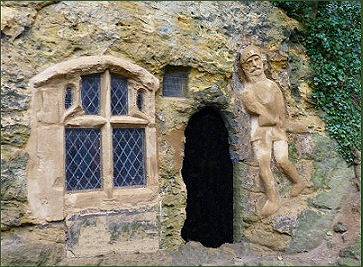 The House in the Rock, known as the Chapel of Our Lady of the Crag, is situated on Abbey Road and is a fascinating local curiosity. The Chapel was built by John the Mason in 1408. Legend relates that his son was almost killed by a rock fall in the quarry. John fervently prayed to the Virgin Mary to save him. When he emerged, miraculously unscathed, from the rubble, John built this chapel in thanksgiving.
The House in the Rock, known as the Chapel of Our Lady of the Crag, is situated on Abbey Road and is a fascinating local curiosity. The Chapel was built by John the Mason in 1408. Legend relates that his son was almost killed by a rock fall in the quarry. John fervently prayed to the Virgin Mary to save him. When he emerged, miraculously unscathed, from the rubble, John built this chapel in thanksgiving.
St Roberts Cave beside the River Nidd is a rare survival of a medieval hermit's home. This site attracted thousands of pilgrims in the Middle Ages. Robert of Knaresborough lived in the cave site in the late twelfth and early thirteenth centuries, visiting pilgrims believed that their ailments could be cured by Robert, and following his death, by the cave itself. The small cave is carved into the face of the limestone cliff, and the remains of a chapel and St. Robert's living area still remain.
Knaresborough is also the site of Ye Oldest Chymist Shoppe, which stands in the Market Square, it is the oldest chemist shop in England. Records reveal a John Beckwith was dispensing medicines in the shop in 1720, but this use of the premises may actually date from much earlier because the building is 200 years older and contained volumes of "dispensatories and herbals" from the seventeenth century.
John Metcalf (1717-1810), also known as Blind Jack of Knaresborough, was the first professional road builder to emerge during the Industrial Revolution. Born into a poor Knaresborough family, he was blind from the age of six following a smallpox infection. John had an eventful life, which was well documented by his own account just before his death. In the period 1765 to 1792 he built about 180 miles (290 km) of turnpike road, mainly in the north of England. A statue of Metcalf stands in the market square, across from Blind Jack's pub.
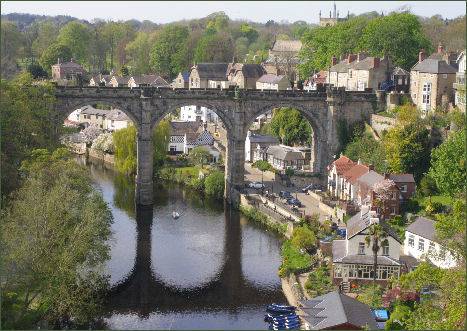
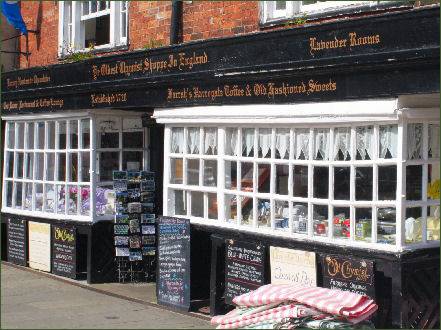
A stronghold of medieval kings, Knaresborough Castle was built in around 1100 on a cliff top overlooking the River Nidd. The castle ruins are now open to the public and the grounds are used as a public leisure space, with a bowling green and putting green open during the summer months. It is also used to host to frequent events. The Courthouse Museum is housed in the Castle's oldest building where visitors can learn about Knaresborough's royal residents, and infamous locals.
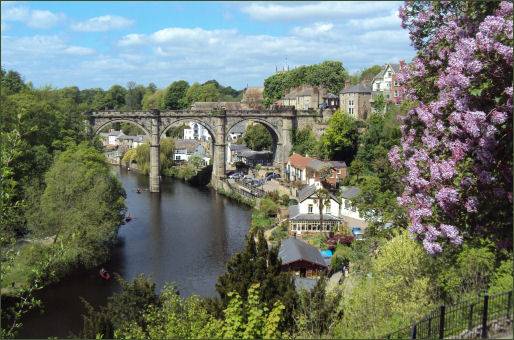
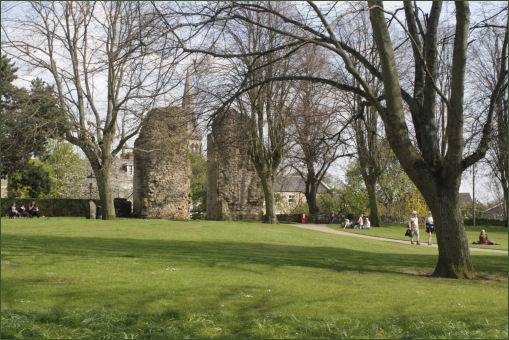
In the 1170's Hugh de Moreville, one of the knights responsible for the murder of Thomas Beckett, sought refuge there, along with his followers, following the assassination of Archbishop Beckett in Canterbury Cathedral.
